In the realm of fitness, few training methodologies have ignited as much debate, and enthusiasm, as CrossFit. CrossFit is characterized by its emphasis on constantly varied functional movements performed at a high intensity.
CrossFit workouts typically blend elements from Olympic weightlifting, endurance sports, and gymnastics. Yet, despite drawing from largely niche sports that require relatively high levels of skill, CrossFit has infiltrated mainstream fitness and promotes itself as an accessible form of training that anyone can do.
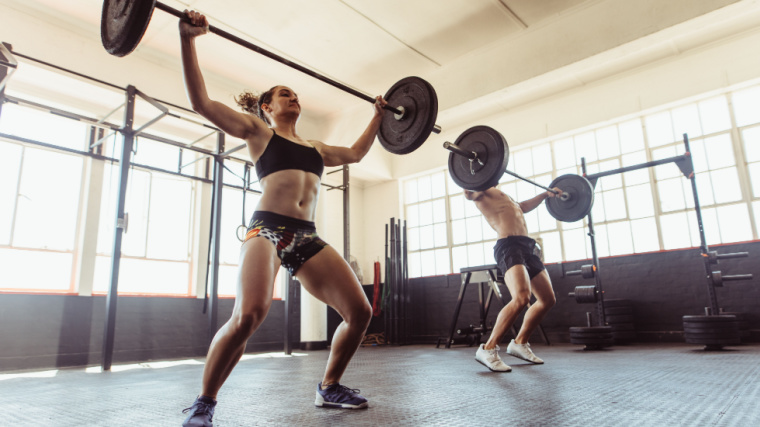
With its surge in popularity, CrossFit has also faced criticism about the foundational principles upon which it was formulated, along with outright skepticism about its ability to be implemented in an effective, safe, and sustainable fashion. Critics raise concerns about the potential injury risk of performing complex movements while under fatigue, the efficacy of trying to improve all aspects of fitness simultaneously, and the seemingly random nature of the workouts.
However, those who regularly participate in CrossFit do see impressive physical benefits in multiple areas. And the feats accomplished at the CrossFit Games each year continue to be astonishing. So, does a training style that produces these results really deserve such a bad rap?
Let’s review some of the strengths and weaknesses of CrossFit as a training regimen for developing overall fitness. While doing so, we might be able to answer the question of whether or not CrossFit is “bad” or if it holds up to the claims of accessibility and appropriateness for everyone.
A Review of CrossFit Training
- Strengths of CrossFit Training
- Weaknesses of CrossFit Training
- How to Make the Most of CrossFit Training
Strengths of CrossFit Training
Having been an established force in the fitness world for more than two decades, and still steadily growing in popularity, CrossFit brings several clear benefits to the table. While these same benefits could sometimes be found with other training methodologies, they are inherently “built-in” to CrossFit training, delivering greater overall results.
Building Cardiovascular Fitness
Let’s face it, most people in the gym probably need to do more aerobic work, aka “cardio.” Even if you are primarily interested in building strength or muscle, it would likely benefit you to not only add cardiovascular training, but to do it via different methods, modalities, and intensities. (1) CrossFit excels at this.
More often than not, a CrossFit workout will require you to row, bike, run, or jump rope. Even workouts that don’t have these specific elements will develop some aspect of aerobic fitness or endurance due to their structure, often by incorporating circuit-style training.
But if your primary goals are developing strength and increasing muscle, won’t this hurt your progress or even cause you to lose your gains? Probably not. In fact, there’s a good chance it will help your long-term progress.
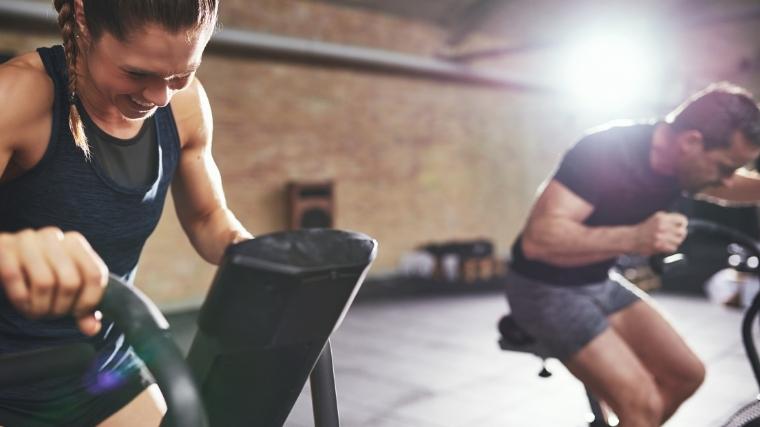
The common fear that aerobic exercise will hurt strength, power, and muscle gain is rooted in what’s known as the interference effect. This is the notion that, if multiple physical qualities are developed simultaneously, none of them are developed very well because they interfere with each other on a physiological level. It’s a “jack of all trades, master of none” situation.
The effect is most pronounced if the qualities require vastly different physiological adaptations, which is the case with strength/power and aerobic adaptations. However, if there is one thing CrossFit has shown us, it’s that the interference effect is not an issue for most trainees. Even fairly advanced trainees can experience significant gains in strength, power, and muscle while simultaneously improving aerobic fitness. (2)
So if aerobic work isn’t hurting these gains, how is it helping them? Improving aerobic fitness will help you recover faster between sets, which can allow you to do more overall work (i.e. volume) in your sessions. This will have benefits regardless of your training style or specific goal. It can allow you to get more reps if your goal is hypertrophy and decrease the amount of rest needed between heavy sets if your goal is strength. The outcome in both scenarios is more high-quality work which can result in a novel stimulus for new gains.
Sure, if you are already at a high level and want to be elite in a specific strength sport such as bodybuilding, powerlifting, or Olympic weightlifting, your training should be specific toward those goals most of the time. But if you’re training for general fitness or to be bigger, stronger, or leaner than most people, improving your aerobic fitness is going to be beneficial.
Emphasis on Bodyweight Movements
Another area that tends to get neglected in many peoples’ training is the use of bodyweight exercises. Now, it’s not like you’re going to build the same levels of muscle or one-rep max strength using bodyweight movements compared to utilizing external load. But your skill and ability in movements using external loads, like free weights, have little carryover to bodyweight-only movements and methods.
Not convinced? Try getting through the bodyweight exercise portion of the popular CrossFit workout “Murph” — complete a total of 100 pull-ups, 200 push-ups, and 300 unweighted squats. The full workout bookends those 600 reps with a one-mile run before and after, and it’s typically performed wearing a weighted vest. But, for an eye-opener, try the exercises on their own.
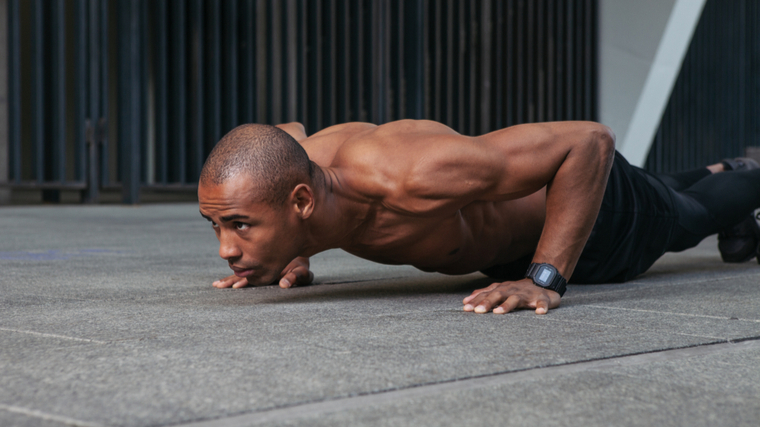
Murph doesn’t care how much you bench or what your muscular endurance is like with heavy, high-rep squats. It will become apparent, very quickly, that those things don’t help you much. If you truly want to develop holistic fitness that helps you look good, feel good, and perform well under a variety of circumstances, you should regularly include some bodyweight exercises in your regimen. (3)
Again, this is one area where CrossFit excels. It’s all but guaranteed that you will be doing some form of unweighted squat, push-up, or pull-up every week. But it’s not just the fitness and work capacity aspect of this that’s beneficial. Many of the bodyweight movements require a degree of skill and total-body control that are unique to them, and this is part of the reason why barbell-based movements don’t transfer well.
This is particularly true of gymnastic-type movements like handstand work and many pull-up variations including chest-to-bar pull-ups, muscle-ups, and even kipping pull-ups. Yep, you read that right: kipping, or incorporating lower body momentum and total-body involvement into a pull-up, is an overall positive attribute. Most often, people’s disdain or outright hate for kipping is simply based on a misunderstanding of what it is.
Many people think that kipping is basically a type of poor technique or a form of “cheating,” and that CrossFitters are just flopping around on the pull-up bar. To be fair, that may sometimes be the case, but it’s not the rule. In reality, kipping is borrowed straight from the gymnastics world. If you’ve ever watched a gymnast perform on the uneven bars, you’ve seen kipping. It’s how they get themselves onto the bars and pick up speed for various movements in their routine.
CrossFit has taken this and applied it to pull-up variations as well as other movements. When done correctly, these movements involve skill, coordination, and body control. And when incorporated as part of a workout, they require aspects of cardiovascular and muscular endurance that’s hard to replicate with other movements.
Weaknesses of CrossFit Training
For as many benefits as Crossfit training can deliver, it is also lacking in some arenas. No single training methodology can really be all-encompassing and general CrossFit training, like many other types of training, has a few holes in its game. Here are some gaps to be aware of before stepping into a Crossfit box.
Only One Gear
CrossFit workouts have two primary formats. One is “As Many Rounds as Possible” (AMRAP), where you attempt to complete a series of exercises for as many rounds as possible in a given amount of time. The other is “rounds for time” where you aim to complete a set amount of rounds as fast as possible.
In each of these formats, training density is the goal — how much work you can accomplish per unit of time. This isn’t necessarily bad. In fact, in many training programs, density is often an overlooked area for progression. But just like any training variable, always chasing the same quality or outcome is a recipe for stagnation or, potentially, mental and physical burnout.
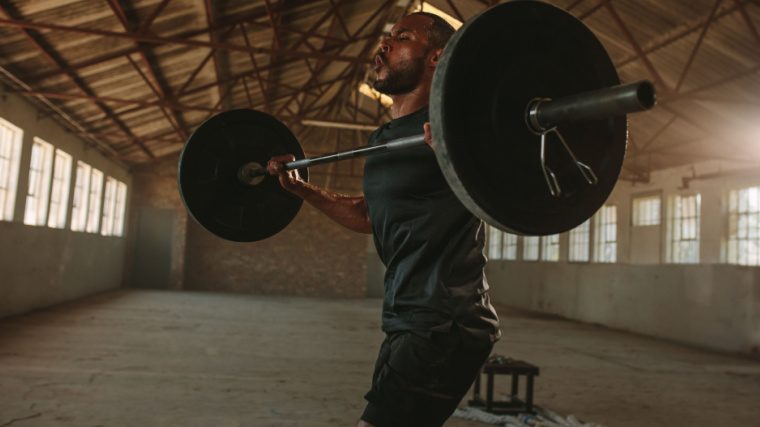
To be clear, this is not necessarily specific to CrossFit. This would be analogous to powerlifters always maxing out or bodybuilders always taking sets to failure. You can get away with doing those things for a relatively short time, but you eventually have to back off or switch gears to make maximum progress.
While there are certainly cases of trainees in those disciplines overdoing it, it’s generally accepted that a well-designed training system rotates through periods of relatively higher, more moderate, and lower workout intensities.
Not only that, but there are endless training methods and formats to accomplish those fluctuations in intensity. You simply can’t train at the highest gear all the time. AMRAPs and rounds for time are very intense, high-gear formats. Even the “easy” days aren’t all that easy when you’re racing the clock to hit a PR performance.
CrossFit, as a general system, hasn’t gotten to the point where more moderate or low-intensity formats are part of the WOD (workout of the day) repertoire. This may seemingly violate the “high-intensity” aspect of the core CrossFit philosophy, but incorporating the lower intensity work can help elevate and improve the high-intensity work without compromising results, while also allowing better overall recovery. (4)
Lack of Movement Variety
One of the key tenets of CrossFit is that it is “constantly varied.” Of course, part of this is in reference to the fact that workouts are constantly changing. But it’s also intended to reference movement variety.
From the outside looking in, CrossFit does appear to incorporate a wide variety of exercises, particularly if you’re relatively new to strength training. The majority of people have likely not considered performing Olympic lifts and their variations on a regular basis, for example. So that could be a whole new library of movements. But if you train CrossFit consistently for a while, you’ll soon find that the movement menu is actually relatively small.
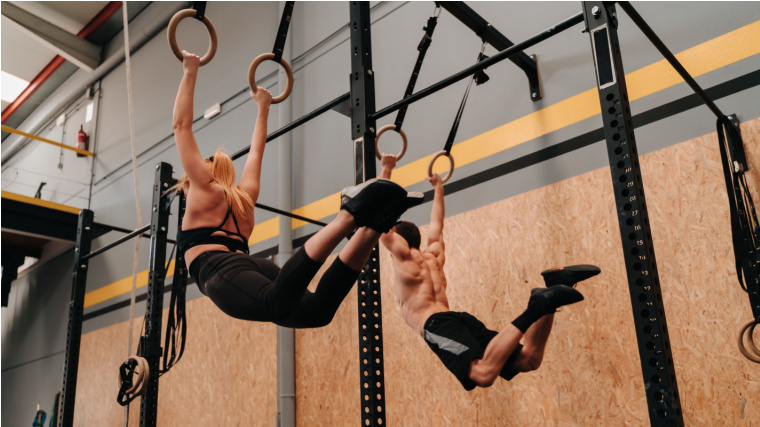
When you take a look at the exercises and the movement patterns that are repeatedly performed, there are a lot of effective exercises, movement patterns, and pieces of equipment that go unutilized. Incorporation these missing elements would not only add much more variety, but would also make the training more in line with another CrossFit tenet: functionality.
Now, to be clear, a high degree of exercise variety does not necessarily mean that a training program is beneficial or highly effective. Frequently changing exercises can present drawbacks of their own, particularly for beginners. And there are countless examples of programs with relatively little movement variety that are very effective at attaining results, whether that be for strength, muscle gain, or fat loss.
However, those programs or training styles don’t hang their hat on being the gold standard of functional training. For CrossFit to be truly functional and constantly varied, there are some missing elements that would be beneficial to include.
Missing Element 1: Lateral and Rotational Movements
Almost every movement in CrossFit is performed in what’s called the sagittal plane. These are movements that are done forward or backward, and/or primarily require flexion and extension (bending and straightening) of the joints involved. This includes CrossFit staples like front squats, deadlifts, cleans, kettlebell swings, box jumps, push-ups, burpees, wall balls… the list goes on.
Our body is designed to do a lot more than just flex and extend. If we don’t do those things, we will gradually lose our ability to do them safely and efficiently. Nevermind the fact that life is multidirectional. We need the ability to rotate, move side to side, and move diagonally, and we need to do all those things while also moving up and down or forward and backward. If we cannot move in those ways (i.e., if we don’t train it), we become less functional.
Missing Element 2: Unilateral Movements
Most of the movements utilized in CrossFit are bilateral, meaning they involve using both legs or both arms at the same time in a symmetrical fashion. But just as life is multidirectional, it’s also predominantly unilateral, especially when it comes to the lower body.
Again, if we want our training to be truly functional, it should regularly incorporate unilateral lower body and upper body movements such as split squats, step-ups, single-leg squats, single-leg deadlift variations, single-arm pressing, and other single-arm and single-leg movements.
Missing Element 3: Horizontal Pulling
When you look at the general movement patterns utilized in CrossFit, one of the biggest omissions is horizontal pulling, or rowing movements. Yes, the rowing machine is often utilized for metabolic conditioning, but that does not provide enough resistance to truly strengthen the muscles of your upper back.
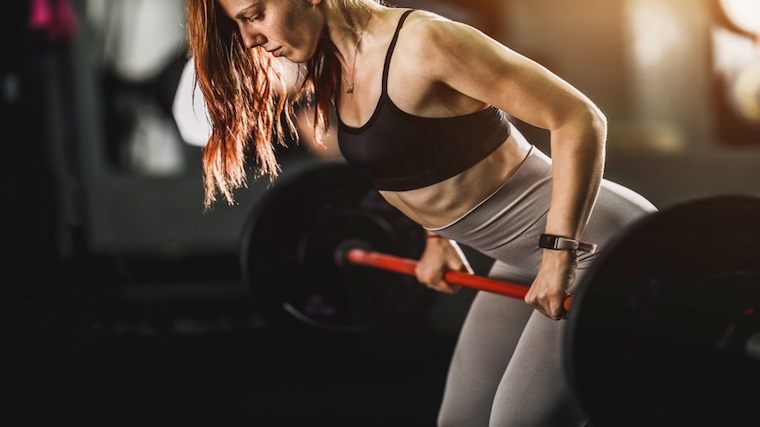
And even though pull-ups are performed on a regular basis, one disadvantage of the kip is that it decreases the involvement of your upper back muscles, particularly the rhomboids, traps, and rear delts. The result is that muscle groups which can be important for posture, shoulder health, overall performance, and having a well-rounded physique go understimulated.
Missing Element 4: More Equipment
On one hand, the fact that a CrossFit box can exist with minimal equipment is a benefit, and this is part of the reason for its growth as a training style. Any sport that requires very specialized equipment has very limited growth potential. It’s one reason why there are more soccer players around the world than there are golfers.
On the other hand, there are a lot of great pieces of exercise equipment that go underutilized or completely unutilized. These are items that would not only add variety and functionality, but would allow necessary movement progressions for people who need them, improve their performance, and potentially reduce the risk of injury.
The medicine ball is a great example. The fact that every CrossFit box has dozens of them, but almost exclusively uses them for wall balls is a bit of a travesty. Medicine balls are meant to be thrown and slammed to develop whole-body power. There are also endless variations through which to incorporate lateral, rotational, and unilateral movements that can be easy to work into metcons.
The Wall-Ball Shot
Other equipment such as trap bars, safety squat bars, physioballs, landmines, and suspension trainers could all easily have their place in CrossFit. They would not only add to the functionality aspect, but provide movement variations that might be more appropriate for some people (e.g., trap bar deadlift vs. conventional barbell deadlift, landmine squat vs front squat, etc.).
However, these items are nowhere to be seen in typical CrossFit programming or WODs and there’s no valid reason as to why. Maybe there would be logistical issues to every CrossFit affiliate having all, or most, of these items which would make affiliate programming difficult. It could also make the style of “CrossFit Training” less recognizable, which isn’t beneficial for branding.
However, it seems as though these items aren’t even considered as options, which may not be beneficial for the majority of trainees on a broad scale.
How to Make the Most of CrossFit Training
If you want to try CrossFit, or use it as your primary form of training, here are some suggestions. Note that these could apply to any training style.
Don’t Be Afraid to Back Off Some Days
It’s OK not to go all out in every WOD. It can be tempting to always try to beat your old PRs or challenge one of your peers, but if you’re feeling run down, it’s much more effective to listen to what your body is telling you and let off the gas from time to time.
Don’t Sacrifice Technique for Rounds or Time
If you’re not a competitor, it’s just not worth it. The antithesis of functional training is consistently doing something that will harm your functionality down the road, such as using improper technique. Slow down in the WODs, or pace yourself appropriately, and take a beat to do movements correctly.
Switch Gears Periodically
Every once in a while, use a completely different training style or have only one specific training goal for a month or two. Maybe it’s just building size or strength via bodybuilding or powerlifting-style training. Or maybe you’re going to mess around using only kettlebells for a month. Or do yoga, or pilates, or hiking the nature trails in your area. These brief periods of drastic variation can be great mental and physical resets.
If you decide to do some supplemental workouts along with your CrossFit training, do the opposite of what you typically do in a WOD. This means taking longer rest times, doing lower intensity aerobic work, and performing different movements or utilizing different pieces of equipment like mentioned earlier. Fit in some medicine ball slams, single-arm dumbbell rows, landmine presses, Russian twists, and other pieces that are missing from the classic CrossFit puzzle.
Is CrossFit a Good Fit for You?
The bottomline is that you can and will simultaneously develop multiple qualities to a relatively high level through CrossFit training. And if your goal is well-rounded fitness — becoming stronger, leaner, and generally more “in shape” than the average person — CrossFit can be a fantastic and effective way to achieve that. (5)
However, the consistent high-intensity and competitive aspects do make it unique from other training styles and they warrant consideration for how they’re approached long-term. Consider the strengths and weaknesses laid out above, consider them relative to your individual needs and goals, and then decide if it’s the right training solution for you.
References
- Patel, H., Alkhawam, H., Madanieh, R., Shah, N., Kosmas, C. E., & Vittorio, T. J. (2017). Aerobic vs anaerobic exercise training effects on the cardiovascular system. World journal of cardiology, 9(2), 134–138. https://doi.org/10.4330/wjc.v9.i2.134
- Schumann, M., Feuerbacher, J. F., Sünkeler, M., Freitag, N., Rønnestad, B. R., Doma, K., & Lundberg, T. R. (2022). Compatibility of Concurrent Aerobic and Strength Training for Skeletal Muscle Size and Function: An Updated Systematic Review and Meta-Analysis. Sports medicine (Auckland, N.Z.), 52(3), 601–612. https://doi.org/10.1007/s40279-021-01587-7
- Harrison, Jeffrey S CSCS, NSCA-CPT. Bodyweight Training: A Return To Basics. Strength and Conditioning Journal 32(2):p 52-55, April 2010. | DOI: 10.1519/SSC.0b013e3181d5575c
- Sousa, A. C., Marinho, D. A., Gil, M. H., Izquierdo, M., Rodríguez-Rosell, D., Neiva, H. P., & Marques, M. C. (2018). Concurrent Training Followed by Detraining: Does the Resistance Training Intensity Matter?. Journal of strength and conditioning research, 32(3), 632–642. https://doi.org/10.1519/JSC.0000000000002237
- Claudino, J.G., Gabbett, T.J., Bourgeois, F. et al. CrossFit Overview: Systematic Review and Meta-analysis. Sports Med – Open 4, 11 (2018). https://doi.org/10.1186/s40798-018-0124-5
Featured Image: Jacob Lund / Shutterstock






